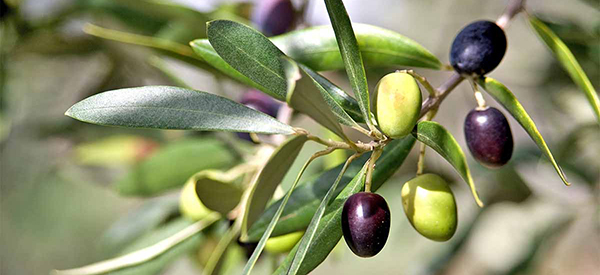
Olive
Olive (Olea europaea) is a small tree that produces the healthiest oil with a wide host of health benefits. This evergreen tree can live up to 2,000 years while still bearing fruits. Olive fruits are often used as appetizers, garnish, or an ingredient in salad, and other savory dishes. But surprisingly, the fruits straight up picked from the tree are bitter and almost inedible even when ripe. It is due to its substance called glucoside oleuropein. This substance is removed through lye and brine treatment. It is in its brined and processed form when the olive is enjoyed, often as a salty treat to a martini.
And speaking of martini, many may not wonder why olive is often served in odd numbers. In cocktail culture, seasoned bartenders consider serving an even number of olives as bad luck. The origin of the superstition is unknown, but it only says much about the importance of the olive and its symbolic connotations. Olive oil is considered holy, while its branch signifies peace and glory.
Olive is one of the oldest trees that is cultivated in the Mediterranean regions. Ancient people pressed the fruit for its oil and use it for lighting. It is considered sacred with its soft light and inoffensive odor when burned. Its purity makes olive an important element in religious rituals until today.
Where Olive Is Found
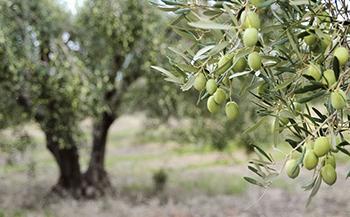 Olive is an evergreen tree that is native to Mediterranean Europe, Asia, and Africa. Its cultivation began to spread westward in Spain, Italy, France, and Portugal. Today, it is planted anywhere and is considered one of the largest fruit crop plantations in the world. They are abundant in low terrains, but may also grace rocky and mountainous conditions.
Olive is an evergreen tree that is native to Mediterranean Europe, Asia, and Africa. Its cultivation began to spread westward in Spain, Italy, France, and Portugal. Today, it is planted anywhere and is considered one of the largest fruit crop plantations in the world. They are abundant in low terrains, but may also grace rocky and mountainous conditions.
⇒ The Complete Map of Edible Plants: Find Out What You Have in Your Area! (Video)
How To Identify Olive
Olive is a perennial evergreen that grows the small drupe fruits of olive that we know. It is also the source of healthy virgin and extra virgin olive oils. The tree looks like a shaggy and feathery bush that grows delicate flowers.
- Leaves. Olive tree leaves are lanced-shaped, leathery, and paired oppositely on the twig. They are about 10 cm long and 3 cm wide, attached to the twig by a small stalk. It has a dark green color with a silvery underside lending the tree its silver looks in summer.
 Flowers. The flowers of olive are delicate white to creamy white. It has four small petals joined at the base with a corolla tube. They appear in axillary racemes or a small cluster at the end of the branches and leaf axils.
Flowers. The flowers of olive are delicate white to creamy white. It has four small petals joined at the base with a corolla tube. They appear in axillary racemes or a small cluster at the end of the branches and leaf axils.- Fruits. Olive grows stone fruits or drupes with a distinctive oval shape. They are about 6 to 20mm wide and 15 to 30mm long with a single pit or stone in the center. Olive fruits are green when young and turn purple to black as it matures.
- Seeds. Olive pits are tiny at only 10 to 15mm in diameter. They are hard, oblong, and brown with a wrinkled surface.
- Trunk. Olive trees grow to about 10m tall with short trunks and numerous branches. Some have a single trunk, while others have multiple and are divided. Either way, they will grow gnarled or knotted as the plant matures. The bark is light grey and smooth that becomes fissured and rough over time.
- Roots. The shallow root system of the olive tree sits close to the soil surface to absorb moisture. However, it can spread wide, sometimes reaching up to 40ft (12m) wide, and is considered an invasive tree.
⇒ Plant Identification Guide – 400 Wild Plants That You Can Forage For (Video)
Olea europaea is a member of the Oleaceae family of about 600 species. Olive is the most important specie with these six known natural subspecies distributed across the world:
- Europaea from the Mediterranean
- subsp. cuspidata (South Africa, Arabia to Southwest China)
- subsp. cerasiformis (Madeira)
- subsp. guanchica (Canary Islands)
- subsp. laperrinei (Algeria, Sudan, and Niger)
- subsp. marrocana (Morocco)
How To Grow Olive
Olives proliferate in the dry regions of the Mediterranean and the bushland of the tropics. But, it is also possible to grow them anywhere as long as they are protected from the harsh winter. They love the long summers and mild winter in USDA zones 8 to 10.
You may plant them indoors, but it will require repotting into a large container every few years as it matures.
Propagation of olive tree is possible using its pit or cuttings. When growing it from the fruit’s pit, it needs to come from the fresh olive fruit. Cut-propagated trees will mature faster than seeds, but are only possible if you have a parent tree.
Some local nurseries may sell olive seedlings that are ready for transplanting. You may also find seeds for planting in most online seed stores and gardens.
⇒ How to Make A Self-Sufficient Backyard on 1/4 of an Acre (Video)
Propagation by Seeds
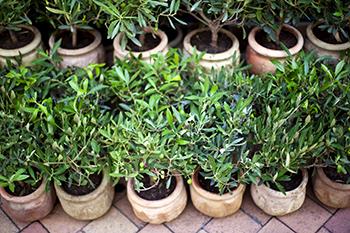 Growing olive from seeds requires patience because of its slow germination. When using fresh olive pits, nick its pointed end with a bolt cutter. But, do not slice all the way through to avoid damaging the hull.
Growing olive from seeds requires patience because of its slow germination. When using fresh olive pits, nick its pointed end with a bolt cutter. But, do not slice all the way through to avoid damaging the hull.
It should only be enough to crack the pit or endocarp. Soak them in warm water overnight and drain them before sowing.
Plant the pits in well-draining soil or a mix of half sand and half seed compost. Sow them about ¼ inch deep and tamp the soil lightly. Place the container in a bright and sunny spot with a temperature of about 55°F. Moisten the mixture whenever it feels dry below the surface. Germination of olive seeds may take one to two months or longer.
Propagation by Cutting
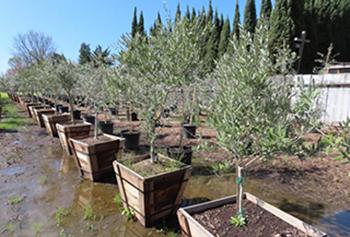 The best time for propagating olive is when the parent plant is already fruiting in summer. Select a cutting from the tip of a healthy branch with semi-hardwood. Cut some 8 inches of the stem and remove the leaves, leaving some five to six at the tip.
The best time for propagating olive is when the parent plant is already fruiting in summer. Select a cutting from the tip of a healthy branch with semi-hardwood. Cut some 8 inches of the stem and remove the leaves, leaving some five to six at the tip.
Dip the cutting in 0.2% IBA rooting talc and flick off the excess. Plant it in a container with a mixture of washed sand and milled peat at 4-inch deep.
Place the pot in a lightly shaded and well-ventilated area at 70°F temperature. Mist the foliage with a spray bottle twice daily and water if the sand dries at the surface.
⇒ Stopped Spending Money At The Pharmacy By Growing These 10 Plants (Video)
Plant Care And Maintenance
Established olive seedlings are resistant to cold as long as the temperature does not drop further from 14°F. Young olives only need the following condition to survive:
- Lots of light but lightly shaded in summer
- Sandy, well-drained soil
- Adequate irrigation
How To Harvest Olives
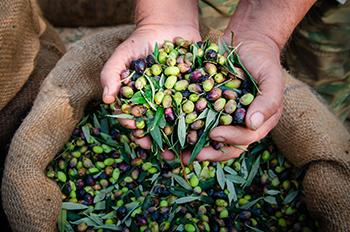 In autumn and winter, olives produce the most oil. Thus, it is the best time for harvesting its fruits for this purpose. But it is also subjective to region, variety, and degree of ripeness needed.
In autumn and winter, olives produce the most oil. Thus, it is the best time for harvesting its fruits for this purpose. But it is also subjective to region, variety, and degree of ripeness needed.
In large plantations, harvesters may use machinery and tractors with shakers to gather the fruits. But traditionally and basically, olives are harvested by hand.
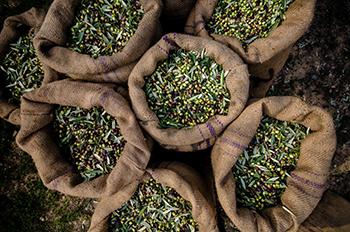 Place a tarp under the tree and gently dislodge the fruits into them. Alternatively, you may also use a ladder to pick them up individually. It is time-consuming, but it preserves the fruit well from bruising.
Place a tarp under the tree and gently dislodge the fruits into them. Alternatively, you may also use a ladder to pick them up individually. It is time-consuming, but it preserves the fruit well from bruising.
Picking olives in its ripeness depends on whether you want to press them for oil or brine them. Green olives that are about to change in color are best for brining. Light yellow ones are best for pressing since their oil content drops as the fruit ripens.
Preserving the harvest is time-bound. After three days, the olive may oxidize and turn sour. Thus, they need to be picked and processed immediately to prevent spoilage.
⇒ The Hidden Food Growing Fence (Video)
What Olive Is Good For And Natural Remedies Made From It
Olive oil is the pinnacle of all healthy oils with its plethora of health benefits. It is valued for its healthy fats like omega-3, omega-6, and linoleic acid aside from its antioxidants. Its phytocompounds and nutrients are important for boosting the body’s overall health.
Among the range of benefits of olive is promoting cardiovascular health and preventing certain cancers. Its phenolic compounds are effective blood thinners to lower the risk of blood clot development. It also eases the tension of the blood vessels and lowers the strain on the heart. Thus, it ensures proper blood flow and oxygenation of the body organs.
Olive is a traditional medicine for digestive and respiratory problems. It supports the proper functioning of the digestive system to cure its ailments. It can also treat cough, asthma, and other lung problems while reducing the risk for allergies.
For people wanting to curb their appetites, olive is the ultimate solution. It contains adiponectin that reduces the appetite while burning fat and improving digestion.
Olive can also slow down aging and prevents many types of cancer. Owe it to its antioxidants, vitamin E, and beta-carotene components.
This sacred plant is also used as a traditional treatment for skin diseases and infections. It has analgesic and anti-inflammatory properties that treat any illness relating to pain and inflammation.
Recent studies proved the significant health benefits of olive oil in treating the following conditions:
- Cardiovascular disease
- Diabetes and metabolic syndrome

- Cancer and other chronic diseases
- Inflammation
- Skin and hair problems
- Pulmonary illness
- Digestive problems
- Premature aging
- Allergies
- Insect bites
- Sleep problems
- Osteoporosis and other bone problems
What Parts Of Olive Are Used For Remedies
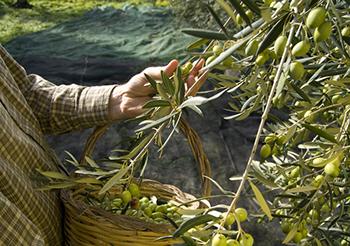
The most potent method of using olive is consuming its tincture. But you may also obtain health benefits from consuming it as food. Olive fruits are the widely used parts of the plant. It is pressed to extract its oil or cured in brine for consumption.
Traditionally, olive leaves are prepared as a decoction or applied topically to problem areas of the body.
Its oil is used for culinary purposes and consumed to alleviate certain health issues.
As an herbal supplement, olive is available in the form of oil, liquid extract, and capsule.
Healing Olive Leaf Extract
You will need:
- • 0.8 oz (25 grams) dried olive leaves (if using fresh leaves, have enough to fill 2/3 to ¾ of the jar)
• 4 fl oz (125mL) vodka (at least 80 proof)
• 8 oz jar with lid
Ratio: 1 part olive to 5 parts vodka
Steps:
- Place the olive leaves into the jar then pour in vodka to cover the herbs.

- Put parchment paper or a sandwich bag on top of the glass jar before covering it with a lid. This will help protect the metal lid from corrosion.

- Label and store the jar in a cool and dry place away from the direct sunlight and allow the leaves to steep. Shake it daily and let it steep for about 4 to 6 weeks. You may transfer the tincture into tincture bottles once ready.

How to use this remedy:
You may use this tincture as an elixir by taking 1 to 2mL (20 drops) up to 3 times a day. When using it to fight an infection, increase the dosage to 5mL (0.2 fl oz).
The amounts and dosage of olive extract as a supplement vary according to age, health condition, and doctor’s prescription. But accordingly, it is potent at a dose of 500 or 1000mg daily.
Warning And Caution
Olive is likely safe for oral ingestion in moderate amounts. The oil or extract can affect the blood sugar levels; therefore, it should not be taken with insulin and other blood pressure medication.
There is no sufficient data to prove its safety and interaction in pregnancy and breastfeeding women. To be safe, women in this age group should avoid taking the olive supplement without their doctor’s advice.
Kidney patients and those undergoing chemotherapy should also consult their doctors before using an olive supplement.
Olive and olive oil should be taken in moderation due to their fat content. Cured olives also contain high sodium and are not advisable for taking in large quantities.
Always check with a doctor before you start taking any herbal supplements.
You may also like:
 The Plant Doctors Are Begging People To Grow
The Plant Doctors Are Begging People To Grow
Similar to Morphine: The Best Natural Painkiller that Grows in Your Backyard (Video)
Top 10 Common Acid Reflux Triggers

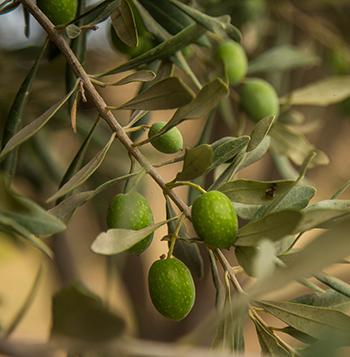 Flowers. The flowers of olive are delicate white to creamy white. It has four small petals joined at the base with a corolla tube. They appear in axillary racemes or a small cluster at the end of the branches and leaf axils.
Flowers. The flowers of olive are delicate white to creamy white. It has four small petals joined at the base with a corolla tube. They appear in axillary racemes or a small cluster at the end of the branches and leaf axils.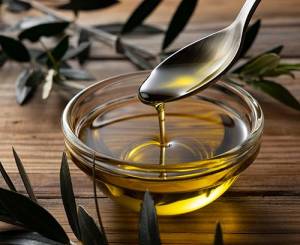
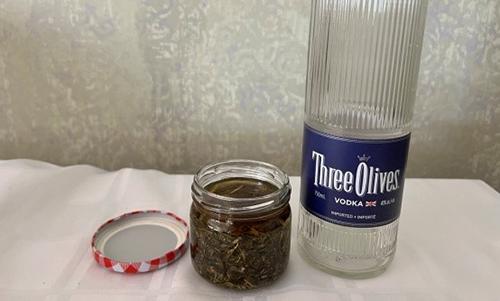
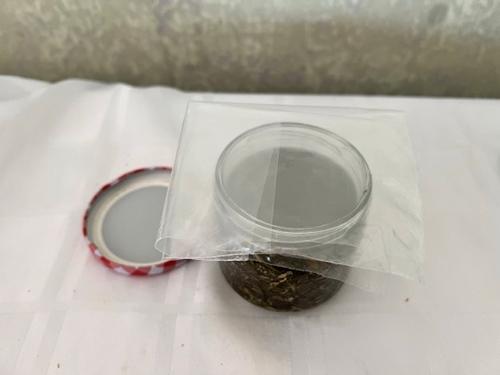
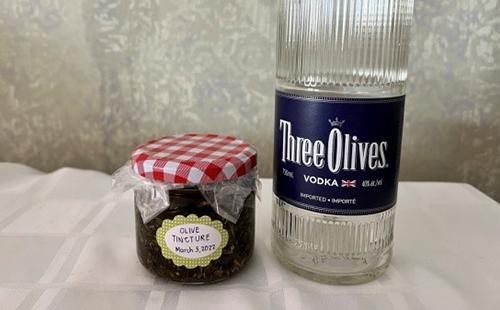
Is there a specific brand of olive oil you recommend? Should it be stored in the fridge after opening and does it expire? Thank you!
What about olive leaf tea or capsules?
Is this the same as Russian Olive trees that grow (and are invasive) around Utah Lake?
Unfortunately, the olive oil industry is rampant with fraud. Investigations have revealed that some brands, even ones that look good, are sometimes cut with cheaper oils like canola or sunflower. It also seems to be olive oil from Italy is most contaminated and controlled by the mafia (not kidding) so Italian olive oil isn’t the gourmet choice it may appear to be. If you can’t verify the grower, best bets for Americans is olive oil from California to at least avoid the organized crime. Make sure it’s organic and small artisanal oil is best. Olive oil in restaurants tends to be low quality, and so is the olive oil packed with canned fish (I buy canned fish with water only). Olive oil also oxidizes quickly so avoid clear bottles. Dark glass bottles are best. Be careful with the oil you choose, although real pure olive oil is indeed healthy.
Thanks. Good to know about it.
I have heard that olive oil’s do come in various qualities. I’ve read Dr. Gundry has a really good organic olive oil but it is rather spendy. Does anyone have any suggestions for a good quality organic olive oil at a reasonable price?
Chosen Foods olive oil has been tested and proven to be true 100% olive oil, in glass bottles, not outrageously priced. Not sure where you are, but in the southeast (at least TN, GA, FL) Publix supermarkets carry this brand.
So sorry for this heads up: Here in the Phoenix area, real olive trees, the fruiting kind are illegal to grow. I’m not in the agricultural zone. I would so love to have the fruiting trees but not allowed.
If you don’t mind me asking, why are they illegal to grow?
Birds eat the fruit, drop the seeds. Call them volunteers on other properties that do not want them. I gather there have been several lawsuits. I want to start cold pressing oils, avocado and olive come to mind. Our whole society is very litigious.
I would like a clarification. You say Olive oil and extract should not be taken with insulin or other blood PRESSURE medicine. Do you mean blood SUGAR medicine?
Did you know that pure olive oil is excellent for burn. It stops the burning right away and hardly any scars left.